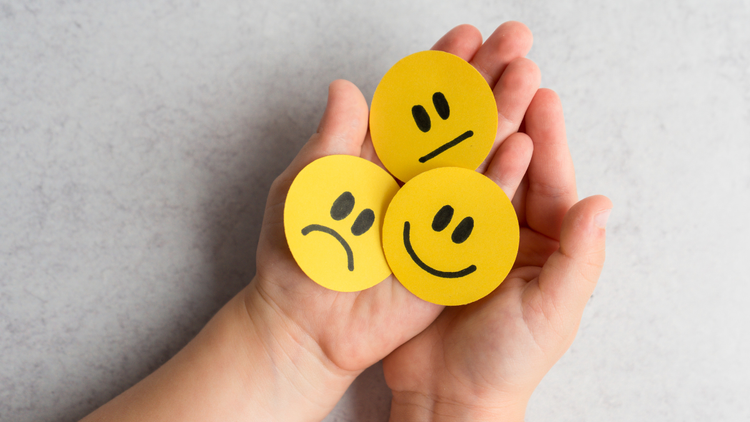Burnout Recovery: 4 Small Steps You Can Take Today

You don’t have to be falling apart to be burned out.
Sometimes, burnout looks like dragging yourself through the day with a flat battery and no idea how to recharge it. It’s the foggy-head feeling as you stumble through the day. The dread when a new email notification pings. The gnawing sense that even rest doesn’t feel restful anymore.
We talk about burnout like it’s some dramatic collapse, but more often, it’s subtle. Creeping. Quiet. And it’s far more common than you may think.
So, what is burnout?
Let’s start by defining the problem. Burnout isn’t just “being tired” or “having a rough week.” It’s a psychological and physiological state of exhaustion caused by prolonged stress and overextension, especially when we feel we have little control or support.
It shows up in three key ways:
- Emotional exhaustion – you feel drained and unable to cope with everyday challenges that you’d typically shrug off.
- Cynicism and detachment – you start to feel numb and disconnected with what’s happening around you. The things that would normally fill you with joy simply don’t anymore.
- Reduced sense of efficacy – you no longer feel productive or capable. Like the hamster on the wheel, no matter how hard you run, it doesn’t feel like you’re making any progress.
It’s not laziness. It’s certainly not weakness. It’s your body and brain saying “I’ve run out of fuel, and I can’t keep running like this.”
Burnout recovery isn’t about doing more. It’s about doing things differently.
Einstein is famously quoted as saying: “Insanity is doing the same thing over and over and expecting different results.”
So, if you see yourself in the burnout definition above, it’s time to start trying something different to move into recovery.
These four small steps aren’t designed to “fix” burnout. They’re designed to help you gently shift direction so you can start to feel more human again. You don’t need a massive transformation. You just need a small step to move forward.
Here’s where to start:
1. Set a Minimum Viable Day
In Agile project management, there’s a concept called the Minimum Viable Product (MVP). It is the most basic version of something that’s functional enough to ship. Not perfect. Not final. Just enough to move forward.
Think of your day the same way.
When you’re burned out, your full to-do list is too heavy to carry. So, instead, focus on your Minimum Viable Day, the smallest version of a day you can complete that still moves you forward.
- Get out of bed.
- Eat something healthy.
- Reply to one message.
- Go outside, even for five minutes.
That’s it. That’s the win. And even a small win should be celebrated.
You don’t need to do it all. You just need to do enough and slowly rebuild your capacity from there.
Remember: you’re stuck in a negative cycle that’s become entrenched over time. Our goal here is to make small but sustainable adjustments to create a virtuous cycle of improvement.
2. Reconnect With Your Body
Burnout pulls us into our heads and keeps us stuck there. Constant worry, overthinking, mental fatigue. But recovery often starts with the body.
This doesn’t mean forcing yourself to do a workout or pretending to be “high vibe.” It means choosing something that brings you back into physical presence.
- Stretch for two minutes.
- Take a walk around the block.
- Sit in a patch of sunlight.
- Lie on the floor and breathe deeply.
These aren’t distractions, but instead, they’re signals to your nervous system saying, “We’re safe. We’re here. We’re okay.”
3. Name What’s Draining You, And Create a “Not To Do List”
Burnout thrives in vagueness. When everything feels too much, it helps to zoom in and ask: What’s actually exhausting me right now?
Is it the back-to-back meetings? The mental load of home life? The pressure to keep performing? The way you’re speaking to yourself internally?
Write it down. Name it. Then stop, delay, delegate, or decline just one thing.
Just as you create a To Do List, trying creating a Not To Do List. What things are robbing you of energy and delaying recover that you can stop?
You can’t fix everything in a day. But you can reclaim one decision, and that’s where your power starts to come back.
4. Create Opportunities for Joy or Comfort
No, you don’t need to book a wellness retreat or meditate for an hour. You just need five minutes to remember what it feels like to be okay. It might be…
- A favourite song on repeat.
- A cup of tea in silence.
- A laugh with someone you love.
- A page from a book that calms your mind.
This isn’t fluff. It’s retraining your brain to see the joy in life.
Burnout makes us feel like joy is out of reach when it’s not. Even a brief moment of lightness can remind your brain: “There’s still something good here.”
You don’t have to do it all. Just start small.
Burnout recovery isn’t a checklist; it’s a recalibration. A slow return to yourself.
You don’t need to fix your whole life. You don’t need to summon motivation. You just need to pick one small step that feels doable today.
Only sustainable changes will lead to long-term recovery. One small thing done consistently is more powerful than one huge, dramatic change done once.
And if nothing else? Let this post be your permission to stop trying to push through and start trying to feel better.
You can do this!
—MRB
My goal is to help people thrive in a complex world. While I write as a psychologist, this content is general in nature, does not constitute a therapeutic relationship, and is not a substitute for personalised mental healthcare advice. Further, some posts may include affiliate links to resources I recommend. Read my full site policy here.





Member discussion